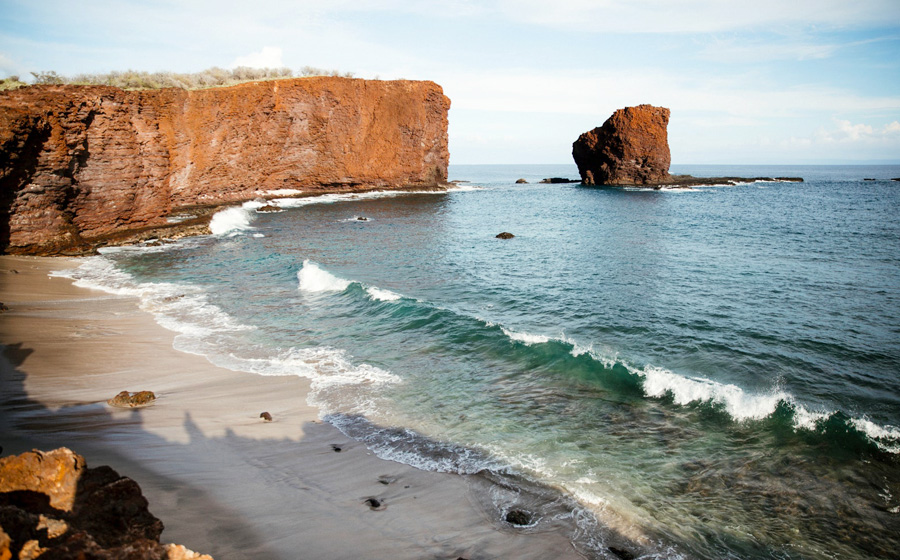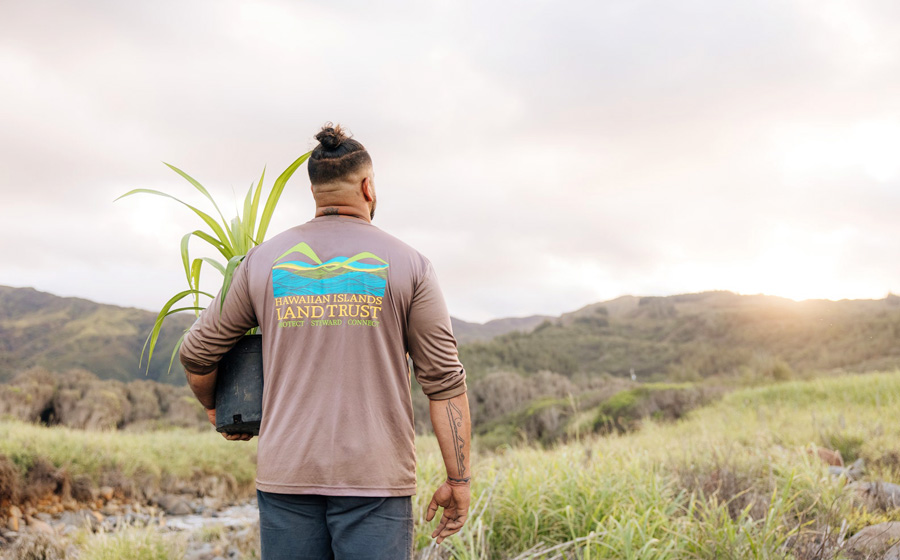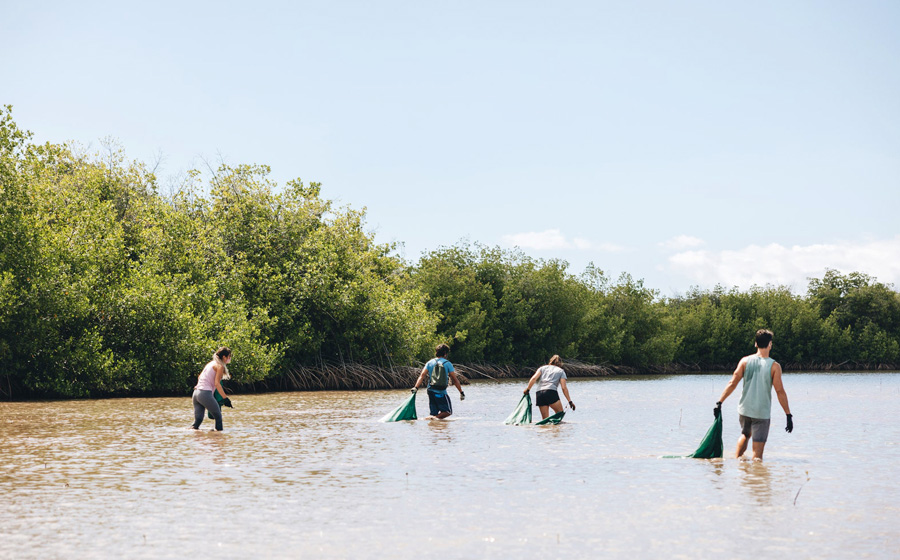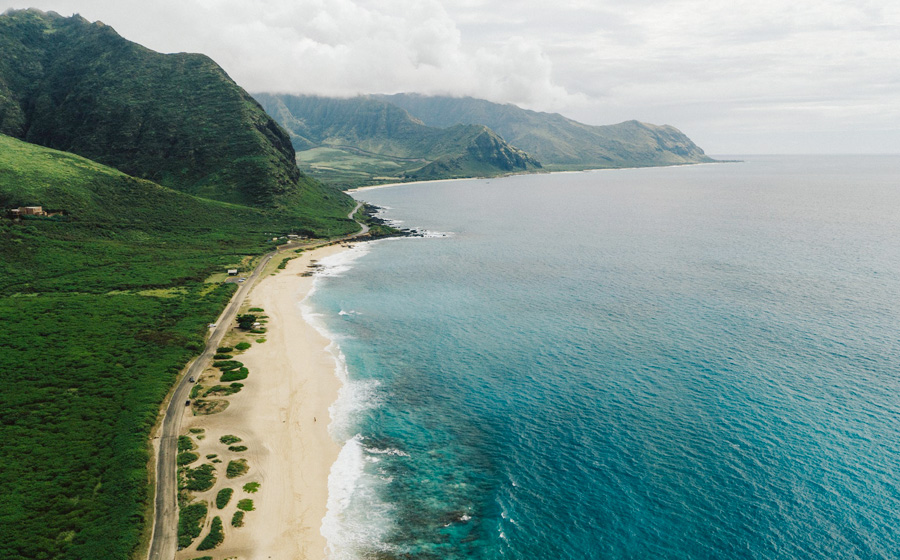Source: cntraveler.com
Most often translated as “take care,” mālama is a key part of Hawaii’s past—and its future.
“The Hawaiians, pre-contact, had a million people, and they fed everyone!”
I’m out on the Moli’i Fishpond at Kualoa Ranch, on Oahu’s eastern—or windward, as they call it here—side with Ku’uipo McCarty, who is officially called the Oyster Operations Manager, though she prefers to be known as the “Oyster Maiden.” The early morning fog has burned off and now blue skies stretch benevolently above steep green mountains so artistically molded they make it hard to argue against the existence of a higher power. (Hollywood has been putting them in movies for more than half a century.) The freshwater Pacific oysters, which have been farmed here since 2014, are a modern introduction, but loko i’a, ponds for growing edible fish, have been a part of life on these islands for hundreds of years, and that’s what Ku’ui, a cheerful, boundlessly energetic woman who has worked at Kualoa for 33 years, is marveling at. “Hawaiians were the only Polynesians to practice walled aquaculture,” she tells me. It was part of a larger system of sustainable traditional agriculture called ahupua’a, which nourished the people without harming the land.

Like a lot of mainlanders, I’ve had joyous, unforgettable experiences in Hawaii, and with those have come some awareness of the incredible innovations native Hawaiian culture produced: the wayfinding prowess that enabled ancient Polynesians to settle these islands, the refinement of upright surfing, the invention, in its earliest form, of poke. Now Ku’ui has introduced me to another: the most advanced fish husbandry techniques in the Pacific at the time of Captain Cook’s arrival, many of which are practiced today in much the same way throughout the islands.
But until my most recent visit, I can’t say I really understood the big picture that linked all these ideas. Something else the ancient Hawaiians came up with was the notion of mālama, which is most often translated as “take care.” It applies to both people and things, with the understanding that all aspects of life are part of a single interdependent whole, and that if you take without giving you upset the balance that makes the world work. The state of Hawaii is using the concept of mālama as the basis of its post-COVID tourism program, a sort of Hawaiian take on the increasingly widespread—and compelling—idea of regenerative tourism. It is, dare I say it, exactly what I think many of us want out of travel right now, as we emerge from this global pandemic that has highlighted our global interrelatedness and seek out life-affirming experiences that let us have a positive impact on the places we visit.
Mālama is often paired with the word āina, which means “land,” and on this visit I find that so often mālama starts with the earth. On the plane I’d begun reading Mark Bittman’s Plant, Vegetable, Junk, a book-length indictment of the extractive system of industrial agriculture developed in post-Revolutionary America and exported to the rest of the world, at the expense of sustainable farming practices that had been perfected over the centuries in places like this one. As I chat with the growers, makers, and purveyors, I quickly realize that they are all trying to rediscover ideas which were about crop diversity and not exhausting the soil, ideas which were cast aside when Big Agriculture, most embodied here by the sugarcane industry, arrived.
One of the best examples of this is O.K. Farms, a family-run operation on almost a thousand acres that used to belong to the C. Brewer Sugar Plantation outside the city of Hilo, on the eastern side of the Big Island. The telegenic family of Kea Keolanui and her parents Ala’amoe and Troy—who co-founded this place nearly two decades ago—walk me through postcard-perfect coffee fields and lychee orchards heavy with explosively juicy fruit, explaining their approach to growing food. Soil health, which was poor here when they arrived, is something they think about constantly. “We feel like we’re stewards of the land,” Kea says as we admire Rainbow Falls, an 80-foot waterfall in Wailuku River State Park next door—a highlight of an O.K. farm tour.

I encounter the same kinds of attitudes about food and the land on Oahu. In another corner of Kualoa, lo’i kalo, or wetlands taro patches, are being cultivated as they were in ancient Hawaiian times, nearly a millennium before the plantations were established. Visitors can wade right into the black water and help harvest the plants. (Kids love this.) Closer to Honolulu, the Kō Hana rum distillery is cultivating more than a dozen heirloom sugarcane varietals according to best practices established by ancient Hawaiians. Here, as at Ku’ui’s fishpond, thoughtful contemporary Hawaiians are utilizing the old ways to produce new food products—in this case, a truly “farm-to-bottle” agricole rum—that never occurred to their ancestors.
And they have counterparts in Honolulu’s increasingly dynamic restaurant scene, like chefs Michelle Karr-Ueoka and Wade Ueoka of the swanky MW in Honolulu, who do elevated, accessible, sometimes entertainingly deconstructed takes on the popular local fare, with native Hawaiian and pan-Asian influences, sourcing their ingredients—including the pink snapper Wade uses for his mochi-crusted fish and the fruits Karr-Ueoka works into her artistic pastries—from family farms and small businesses like Kō Hana. “What’s fun about cooking in Hawaii is to utilize what makes Hawaii so special,” Karr-Ueoka tells me as I try to keep from wolfing down her tropical fruit creamsicle brûlee, a heavenly mix of temperatures and textures that captures the sweetness of Hawaii in all its variety. “When they make excellent produce and ingredients, our job is so much easier.”
On the Big Island, I meet Brandon Lee, who, as a farmer and restaurateur, operates on both sides of that relationship. Loquacious and charismatic enough to have his own reality show, Lee tried his hand at automotive sales on the mainland and bartending on Waikiki Beach before returning home to open Napua at Mauna Lani Beach Club, a laid-back restaurant tucked into the island’s Resort Row, with chef Keoni Regidor, a boyhood friend. Their goal was to showcase the bounty of local ingredients in a place that, despite being world-famous for the things that grow here, imports more than ninety percent of its food. These ingredients include Berkshire pork from Kaunamano Farm, the hog farm the duo founded seven years ago, where through techniques like rotational grazing and a diet heavy on macadamia nuts they raise some of the healthiest, sweetest-smelling pigs I’ve ever met.

As I sit with Lee on the patio overlooking quiet Makaiwa Bay, devouring a parade of sumptuous, cheerfully arranged dishes—astoundingly fresh ahi and calamari, ‘Nduja toast and pork loin with meat sourced from Kaunamano—I watch the staff interact with Brandon and the diners and each other and recognize that Napua is a place where stewardship of the land intersects with taking care of Hawaiians. “Everything needs to connect,” says Lee, who employed his restaurant waitstaff up on the farm when Napua was closed because of COVID. “Not just the plants but also we as people. We need to be part of the system.”
One of the ways contemporary Hawaiians make it all connect, just as their ancestors did, is to “talk story”—to share a continuous ferment of folklore, history, news, ideas, and personal anecdotes. Pretty much everyone here does it, and I start to think of it as another way of practicing mālama. “It’s critically important that we mālama, or take care of, the stories,” says Zita Cup Choy. An effervescent chronologist of Hawaiian history and culture, she is the historian at Iolani Palace in Honolulu, a mashup of Italian Renaissance style and traditional Hawaiian forms that King Kalākua had built in 1882 to project Hawaii’s strength on the world stage. “We are caring for them in a way that will allow our grandchildren’s grandchildren to enjoy them and to see them and to share them.”
Again and again, the Hawaiians I meet on this trip emphasize the importance of receiving the old wisdom and passing it down to our descendants. At the Bishop Museum, an incredible repository of Hawaiian history and culture a few miles from Iolani Palace, Marques Hanelai Marzan, a museum curator and accomplished fabric artist himself, shares with me the hina’i, or traditional woven baskets, that have inspired his own work. “Our ancestors were innovative enough, creative enough, to create something so intricate and so beautiful, but also very functional,” he says. “There’s a small handful of us who are trying to bring this art form back to life. A lot of the younger generation are trying to go back to the land, reconnect with the environment, and learn how our ancestors lived.”

This attention to generational renewal applies no less if you’re a visitor. Before a sunrise water purification ceremony on Waikiki Beach, where early morning surfers sit on the horizon awaiting the next wave, Thelma Kehaulani Kam, the director of cultural services for the Marriott Waikiki Collection, asks me to draw strength from my own grandparents and great grandparents before I immerse myself. I come to see the conservation-minded tree-planting programs, which have become increasingly common here, are a symbol of this principle. I take part in one with Calvin Dorn, the soft-spoken founder of Paradise Helicopter Tours, who flies me to a sequestered corner of the Big Island to plant a native ‘ōhi’a tree, a program he recently launched for Paradise guests. The tree is replete with its own symbolism: Distinguished by its characteristic red blossoms, it’s usually the first sign of life on the fresh lava fields so common on Hawaii’s most southerly island. It’s a small act, but I find that tamping the earth down around this fragile seedling, on the edge of a forest high above some of the world’s most beautiful ocean, means more than I expected, and I want to bring my children back years from now to see how it has grown.
